Top 10 Istanbul hammam curates a list of the finest traditional hammams in Istanbul, highlighting their historical significance, architectural beauty, and bathing experiences. Among the most notable are Hürrem Sultan Hamamı, designed by Mimar Sinan in 1557 for Sultan Süleyman’s wife, and Kılıç Ali Paşa Hamamı, built in 1583 to serve Ottoman naval forces. Other well-known hammams include Cağaloğlu Hamamı (1741) with its baroque-style interiors, Çemberlitaş Hamamı (1584) near the Grand Bazaar, and Süleymaniye Hamamı (1557), a rare mixed-gender facility within the Süleymaniye Mosque complex. The list also features Aga Hamamı (1454), built for Sultan Mehmed the Conqueror, and the recently restored Zeyrek Çinili Hamamı (1546), which now includes a small museum.
This page also explains the traditional Turkish hammam experience, guiding visitors through the various stages of the ritual. Guests start in the changing room (soyunmalık) before moving to the warm room (ılıklık) to acclimate to the heat. The heart of the hammam is the hot room (hararet), featuring a heated marble platform (Göbek Taşı) where bathers sweat and prepare for exfoliation. A traditional attendant performs a scrub (kese) and foam massage, followed by rinsing with warm water from kurna basins. After cleansing, visitors relax in the cooling room (soğukluk) and enjoy tea or refreshments. The page also touches on hammam etiquette, including appropriate dress codes, service options, and tipping customs, making it a comprehensive guide for first-time visitors to Istanbul’s iconic bathhouses.
Top 10 Istanbul Hammam – Table of Contents
Top 10 Istanbul Hammams
Hürrem Sultan Hamamı (1557)
Location: Hurrem Sultan Hamami, Cankurtaran, Ayasofya Meydanı No:2, 34122 Fatih/İstanbul. Website: Hammam website link (English). Opening Hours: Daily: 08:00 – 22:00. Price: In March 2025, a Pir-ü Pak traditional hammam ritual (45 minutes) was priced on their website at €95.00.
The Hurrem Sultan Hamami, a magnificent 16th-century Turkish bath in Istanbul, was commissioned by Hürrem Sultan, the beloved wife of Sultan Suleiman the Magnificent, Roxelana. This historic hammam was designed by the renowned Ottoman architect Mimar Sinan and built in 1557. Situated between the iconic Blue Mosque and the Hagia Sophia, it was constructed on the ancient Baths of Zeuxippus (100-200 A.D.) site, echoing the city’s rich history. It remained an active hammam until 1910, when it closed and later became a prison. From 1958 it was designated as a carpet museum but closed for renovation in 2007.

Today’s hammam resulted from a $20 million three-year renovation in which no element of original bath architecture was sacrificed under the guidance of the Kocaeli University Faculty of Architecture, the baths reopened in 2011. The grand hammam is a masterpiece of Ottoman architecture, boasting two symmetrical sections for men and women, a unique feature in its time. The spacious layout includes a changing room, a cool room for relaxation, and a hot room with a central marble platform for the traditional Turkish bath rituals. The Hurrem Sultan Hamami, with its opulent design and historical significance, offers visitors a chance to experience the authentic Turkish bathing culture in a truly regal setting. It is open to the public daily from 08:00 to 20:00.
Kılıç Ali Paşa Hamamı (1583)
Location: Kılıç Ali Paşa Hamamı, Kemankeş Karamustafa Paşa, Hamam Sk. No:1, 34425 Beyoğlu/İstanbul. Website: Hammam website link (English). Opening Hours: Daily: Women 08:00 – 1600, Men 16:45 – 23:30. Price: In March 2025, a traditional hammam ritual was priced on their website at the TL equivalent of €75.00.
Kılıç Ali Paşa Hamamı is a historic Turkish bath located in Istanbul’s Tophane district. Commissioned by Kılıç Ali Pasha, a prominent Ottoman admiral, the hamam was designed by the esteemed architect Mimar Sinan and constructed between 1578 and 1583. It was built as part of a larger complex that includes the Kılıç Ali Paşa Mosque and a madrasa, serving the Ottoman naval forces stationed in the area.

The hamam is renowned for its impressive architecture, featuring a central dome that measures 14 meters in width and 17 meters in height, making it one of the largest domes among Istanbul’s hammams. The facility includes traditional spaces such as the soğukluk (cooling room), ılıklık (warm room), and hararet (hot room), all meticulously restored to reflect their original grandeur. After an extensive seven-year restoration, Kılıç Ali Paşa Hamamı reopened in 2012 and now welcomes visitors daily, offering separate hours for women and men. It is open to the public daily from 08:00 – 1600 for women and from 16:45 – 23:30 for men.
Tarihi Galatasaray Hamamı (1481)
Location: Tarihi Galatasaray Hamamı, Kuloğlu, Turnacıbaşı Cd. No:8, 34433 Beyoğlu/İstanbul. Website: Hammam website link (English). Opening Hours: Daily: 09:00 – 21:00. Price: In March 2025, a traditional hammam ritual “scrub service” was priced on their website at the TL equivalent of €77.00.
Tarihi Galatasaray Hamamı, located in Istanbul’s Beyoğlu district, was commissioned by Sultan Bayezid II in 1481 as part of the Galatasaray Mosque complex (külliye) and was later extended in 1715. The hammam’s origin is linked to a legend involving Gül Baba, a revered figure of the time, who requested the construction of a school and a bathhouse on the land where the Galatasaray High School and the hammam now stand. Sultan Bayezid II honored this request, establishing the külliye, which included the mosque and the hammam. It is open to the public and has separate sections for men and women.

Cağaloğlu Hamamı (1741)
Location: Cağaloğlu Hamamı, Alemdar, Prof. Kazım İsmail Gürkan Cd. No:24, 34110 Fatih/İstanbul. Website: Hammam website link (English). Opening Hours: Monday – Thursday: 09:00 – 22:00, Friday – Sunday: 09:00 – 23:00. Price: In March 2025, a traditional hammam ritual was priced on their website at €90.00.
Cağaloğlu Hamamı, located in Istanbul’s Eminönü district, was constructed in 1741, making it one of the last significant hammams built during the Ottoman Empire. Commissioned by Sultan Mahmud I, the bathhouse was designed to generate revenue for the library situated within the Hagia Sophia Mosque. Construction began under the supervision of Chief Architect Süleyman Ağa and was completed by his successor, Abdullah Ağa. Cağaloğlu Hamamı was established primarily to financially support the Hagia Sophia’s library, unlike many hammams associated with mosques or palaces.
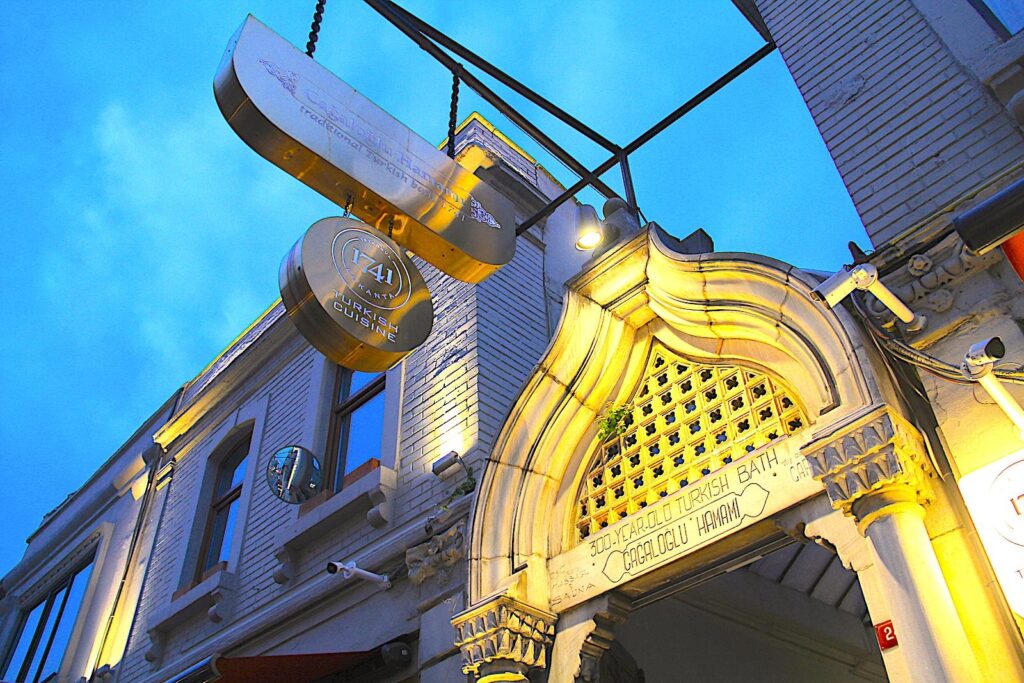
The hamam showcases Ottoman Baroque architecture and is designed as a double bath, providing separate sections for men and women. Its facilities include traditional features such as the soğukluk (cooling room), ılıklık (warm room), and hararet (hot room), all adorned with intricate marble and stone work. The central dome, a prominent architectural feature, enhances the spaciousness and grandeur of the interior.
Çemberlitaş Hamamı (1584)
Location: Çemberlitaş Hamamı, Molla Fenari, Vezirhan Cd. No:8, 34440 Fatih/İstanbul. Website: Hammam website link (English). Opening Hours: Daily: 06:00 – 00:00. Price: In March 2025, a “traditional style” hammam ritual was priced on their website at the TL equivalent of €63.00.
Çemberlitaş Hamamı, located in Istanbul’s Çemberlitaş neighborhood, is a historic Turkish bath commissioned by Nurbanu Sultan, the wife of Sultan Selim II and mother of Sultan Murad III. Completed in 1584, the hammam was designed under the supervision of the renowned Ottoman architect Mimar Sinan. It was constructed to serve the public and generate revenue for charitable endeavours, including the Atik Valide Mosque complex. Strategically situated near the Divan Yolu, a significant thoroughfare from the Byzantine era, the hammam is close to notable landmarks such as the Grand Bazaar and the historical Column of Constantine.
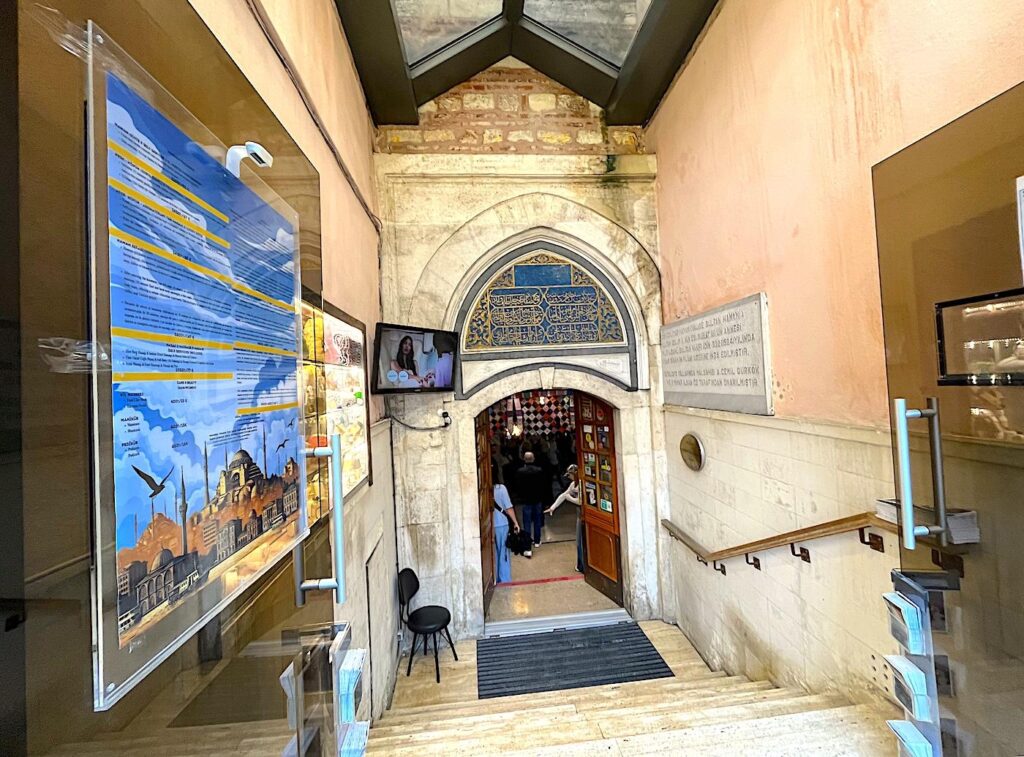
The hammam features separate sections for men and women, comprising traditional spaces. The entrance for the men’s section is on Vezir Han Street and, because the road height has increased over time, it now has a deep entrance that is ten steps below street level. There are eaves over the entrance and an inscription with six lines in three columns on top of the entrance door. In the past, the women’s section entrance must have been from the Divanyolu Street adjacent to the tomb of Sultan Mahmut, but today, women also use the men’s entrance and proceed to their own section through a side door. The central hot room is distinguished by a large heated marble platform (göbektaşı) surrounded by bathing chambers and niches, all beneath a prominent dome supported by twelve columns.
Süleymaniye Hamamı (1557)
Location: Süleymaniye Hamamı, Süleymaniye, Mimar Sinan Cd. No:20, 34116 Fatih/İstanbul. Website: Hammam website link (English). Opening Hours: Monday – Saturday: Men 06:00 – 10:00, families 10:00 – 21:30, closed Sundays. Price: In March 2025, a traditional hammam ritual was priced on their website at €75.00.
Süleymaniye Hamamı is a historic Turkish bath designed and built between 1550 and 1557 by the renowned Ottoman architect Mimar Sinan. Commissioned by Sultan Süleyman the Magnificent, the hammam is an integral part of the larger Süleymaniye Mosque complex, which sits atop a hill overlooking the Golden Horn. Sultan Süleyman himself and subsequent sultans frequented this bathhouse, with designated quarters reserved for their use. The hamam’s architecture features arched and domed structures with elaborate marble inlay on the walls. A private cubicle, reportedly used by Mimar Sinan during his residence near the mosque complex from 1557 to 1588, is still preserved. Another private cubicle, originally reserved for the sultan, was later used by high-ranking theological scholars.
Suleiman the Magnificent had this bath built in 1557, being a part of the great Kulliye of Suleymaniye, the architect of which was Mimar Sinan. In this work, a private lodge belonged to Suleiman the Magnificent, which Mimar Sinan called a work that belongs to his “assistant architect period”. It was known also as the Dokmeci Turkish Bath since it was located near the foundry (dökmeci) ateliers during the Ottoman period. Rumour has it that a “bowl of icterus“ was lost after being used for ages. According to belief, those who got washed with this bowl were cured. Suleymaniye Turkish Bath is one of the nicest baths in Istanbul, with its domes and geometrically aligned chimneys. Eight marble columns are surrounding the central massage stone. The bath that was closed in 1924 was renovated and recommenced serving in the year 2004.
Tarihi Gedikpaşa Hamamı (1475)
Location: Tarihi Gedikpaşa Hamamı, Mimar Hayrettin, Emin Sinan, Hamam Çk. No:61, 34126 Fatih/İstanbul. Website: Hammam website link (English). Opening Hours: Monday – Thursday: 09:00 – 22:00, Friday – Sunday: 09:00 – 23:00. Price: In March 2025, a traditional hammam ritual was priced on their website at €60.00.
Tarihi Gedikpaşa Hamamı, located in Istanbul’s historic district near the Grand Bazaar, close to Beyazıt (T1) tram stop, was commissioned by Gedik Ahmet Pasha, a prominent military commander during the reign of Sultan Mehmed II. Constructed in 1475, the hammam is attributed to the esteemed Ottoman architect Mimar Hayrettin. Unlike many Turkish baths associated with mosques or palaces, Gedikpaşa Hamamı was established as an independent public bathhouse, serving the community without direct ties to a specific religious or royal complex.
Spanning approximately 2,350 square meters, Gedikpaşa Hamamı showcases classic Ottoman architectural features, including intricate tile work, domed ceilings, and marble interiors. The facility is designed as a double bath, accommodating both men and women in separate sections. The hammam’s main dome rises impressively to a height of 16 meters, enhancing the spaciousness and ambiance of the interior. This historic bathhouse continues to operate, offering visitors an authentic experience of Ottoman-era bathing traditions.
Zeyrek Çinili Hamami (1546)
Location: Zetrek Cinili Hamami, Zeyrek, İtfaiye Cd. No:44, 34083 Fatih/İstanbul. Website: Hammam website link (English). Opening Hours: Tuesday-Sunday: 08:00 – 22:00, closed Monday. Price: In March 2025, a traditional hammam ritual was priced on their website at €105.00. Hammam museum ticket TL equivilent of €5.00.
Çinili Hammam, also known as Zeyrek Çinili Hammam, is a historic Turkish bath located in Istanbul’s Zeyrek neighborhood. Commissioned by Admiral Barbaros Hayreddin Pasha between 1540 and 1546, it was one of the earliest hammams designed by chief Ottoman architect, Mimar Sinan. The name “Çinili” translates to “tiled” in Turkish, reflecting the bath’s original adornment with over 10,000 blue tiles in 37 unique designs, which contributed to its distinctive aesthetic.
The hamam was designed as a double bath, featuring separate sections for men and women. Each section included the traditional sequence of rooms. After a period of disuse, the Zeyrek Çinili Hamam underwent a comprehensive restoration, reopening to the public in September 2023. The restoration not only preserved its historical architecture but also introduced modern amenities, including a museum space that showcases the hamam’s rich history and the traditions of Ottoman bathing rituals.
Aga Hamami (1454)
Location: Aga Hamami, Kuloğlu, Turnacıbaşı Cd. No:48, 34433 Beyoğlu/İstanbul. Website: Hammam website link (English). Opening Hours: Daily: 10:00 – 22:00. Price: In March 2025, an “entrance, scrub and foam bath” hammam ritual was priced on their website at the TL equivalent of €67.00 (€59.00 for TL cash).
The Historical Ağa hamamı was constructed by Fatih Sultan Mehmed the Conqueror. Ağa Hamamı was used as a private hamam by Mehmed the Conqueror and his sons. At that time, Beyoğlu District was not a settlement area and the Sultans would come to Beyoğlu District for hunting. Mehmed the Conqueror constructed this building as a hunting house in 1454. Ağa hamamı was designed as a hammam below the two flats above when it underwent a large-scale renovation in 1844 by Abdulmecid (the 31st Ottoman Sultan). The Sultans and their sons used it until the final years of the Ottoman Empire.
The Ottoman Empire ended with the foundation of the Republic of Turkey in 1923. In those days, an Armenian woman bought the Ağa Hamamı, which was first opened to the public. Later she sold the Ağa hamamı to Huseyin Yilmaz. In his old age, Huseyin Yilmaz sold it to his nephew Ali Yilmaz in May 1974 after thirty-four years of operation. In 1986, Ali Yilmaz made a major renovation. It has served tourists and has been a mixed hamam in Istanbul for over ten years.

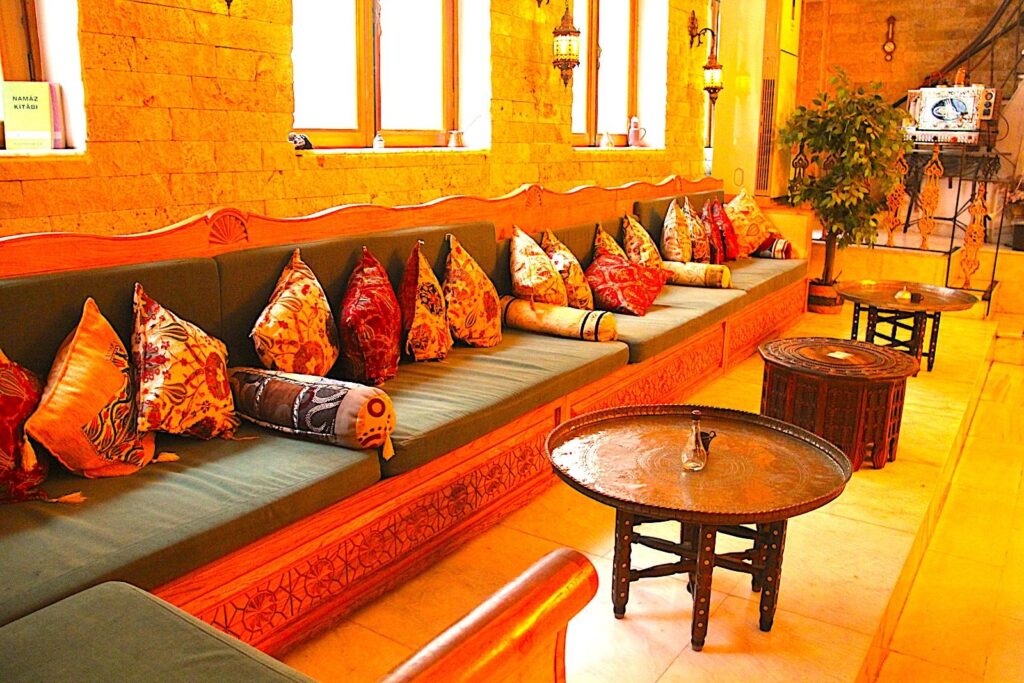
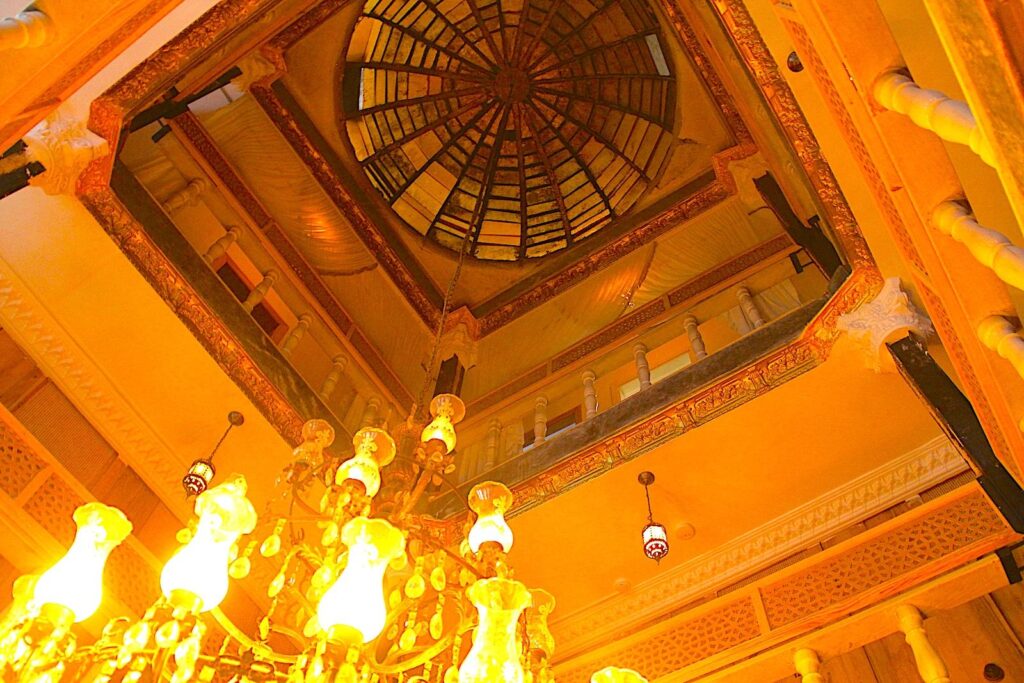
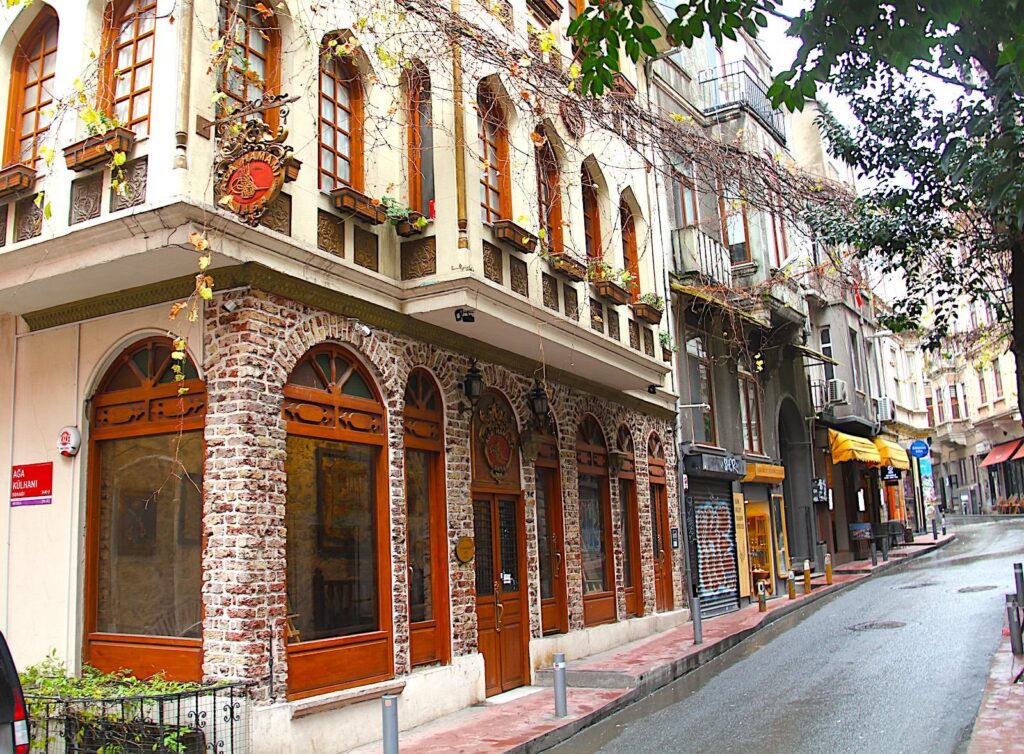
Tarihi Cesme Hamami (1720s)
Location: Tarihi Çeşme Hamamı, Arap Cami, Bankalar Cd. No:21, 34420 Beyoğlu/İstanbul. Website: Hammam hotel website link (English). Opening Hours: Daily: 10:00 – 22:00.
The historical ‘Çeşme Hamamı’ was built by Grand Admiral Kaymak Mustafa Pasha at the end of the 1720s, in the Tulip Era, famous for its wealth and entertainment during the Ottoman Empire. Shortly after the hammam was built, he was imprisoned and executed in a rebellion, which ended the Tulip Era. This rebellion is called the “Patrona Halil Rebellion” in Ottoman History. It continued to be used as a bathhouse until 2017 when it was restored by preserving its original structure. ‘Çeşme Hamamı’ was reopened by The Galata Istanbul Hotel MGallery following its original style and maintains the 300-year-old tradition of wellness of water therapy. The hotel guests can use the hammam for free, and it is open to the public between 12 am and 10 pm every day.
Other Notable Istanbul Hammams
Mihrimah Sultan Hamami (1565)
Location: Mihrimah Sultan Hamami, Karagümrük, Fevzi Paşa Cd. No:333 D:333, 34091 Fatih/İstanbul. Website: Hammam website not working. Opening Hours: Daily: 07:00 – 23:00. Price: There is no data online with a price list, in December 2024, it was reported that the hammam entry and scrub were priced at the TL equivalent of €19.00.
The Mihrimah Sultan Hamam is a historic Turkish bath in the Fatih district of Istanbul. It was built between 1562 and 1565 by the Ottoman architect Mimar Sinan, for Mihrimah Sultan, the daughter of Sultan Suleiman the Magnificent. The hammam is part of the Mihrimah Sultan Mosque complex, designed by Sinan. It is one of the few remaining double hamams in Istanbul, meaning it has separate sections for men and women.
Tarihi Şifa Hamamı (1777)
Location: Tarihi Şifa Hamamı, Sultan Ahmet, Şifa Hamamı Sk. No:12, 34122 Fatih/İstanbul. Website: Hammam website link (English). Opening Hours: Daily: 09:00 – 23:00, Wednesdays until midnight. Price: In March 2025, a “classic” hammam ritual was priced on their website at €50.00.
Tarihi Şifa Hamamı was established in 1777 in Istanbul’s historic Sultanahmet district. While specific details about its commissioner and architect are not readily available, its proximity to significant landmarks like the Blue Mosque and Hagia Sophia suggests it was strategically placed to serve the residents and visitors of this central area. The hamam is relatively small and entirely marbled throughout, possibly retaining many original fittings. It offers separate sections for men and women, providing services such as traditional scrubs, massages, and relaxation areas. Guests can enjoy amenities like apple tea, enhancing the authentic Turkish bath experience.
Attending a Turkish Hammam
Visiting a Turkish hammam (bathhouse) is a unique and culturally rich experience, but it follows a specific etiquette to ensure comfort and respect for tradition. While processes will vary from hammam to hammam and depending on availability of attendants, allow yourself around 90 minutes for the experience: 30 minutes for preparation and warming up, 30 minutes for scrub and washing ritual and 30 minutes for the rinsing and cooling down processes. Here’s a detailed guide to help you navigate the process smoothly:
Arrival & Preparation – The Soyunmalık
Upon entering the hammam, the reception staff will greet you. Typically, you can choose a self-service bath (where you wash yourself) or a full-service experience, though self-service is unavailable in most of the large historical Istanbul hammams. The minimum treatment is usually a “Traditional Hammam Ritual,” sometimes described as a “Scrub & Foam Service” or “Classic,” which includes the traditional scrub and massage by an attendant.
After paying, you’ll be given a pestemal (a traditional cotton towel) to wrap around your body and sometimes a pair of wooden slippers (takunya) or rubber sandals. Guests are typically required to wear a swimsuit or underwear. Still, if you did not bring any or prefer not to carry wet clothing afterwards, they usually provide disposable underwear. Men and women bathe generally in separate sections, but some modern hammams offer mixed-gender sessions or specific hours for couples. You’ll be directed to the soyunmalık (equivalent to the apodyterium in a Roman bath), a changing room to undress and store your belongings in a locker.
Warming Up – The Ilıklık
The hammam consists of multiple rooms, with the ılıklık (equivalent to the tepidarium in a Roman bath), often the first room you enter in a traditional Turkish hammam, is a moderately heated to around 35-40°C, designed for gradual acclimatisation. It’s warmer than the changing area but significantly cooler than the intense heat of the hararet. Consider it a transition zone where your body gently adjusts to the rising temperatures, preparing you for the deeper cleansing, typically you might spend around 15 minutes acclimatising in the Tepidarium. Often featuring comfortable seating, perhaps marble benches or tiled platforms, the tepidarium encourages relaxation and allows your pores to begin opening in the soothing warmth. Some tepidariums may also include a small pool or fountain, offering a refreshing contrast to the gentle heat.
Entering the Hot Room – The Hararet and Göbek Taşı
The main bathing area is the hararet (equivalent to the caldarium in a Roman bath), a steamy, intensely heated space, often with a high domed ceiling and a central raised heated marble platform (Göbek Taşı). The room is typically heated to 45-60°C, designed to open pores and prepare the body for cleansing, where the primary cleansing and detoxification occurs. Lie down or sit on the heated marble for 10-15 minutes to let your body relax and sweat. Around the room, you’ll see kurnas (marble basins) with hot and cold water. Use the provided tas (metal bowls) to pour warm water over yourself before the scrub. The word “hararet” comes from the Arabic word “ḥarāra,” meaning “heat.
The Scrub & Washing Ritual
If you’ve opted for a traditional service, a tellak (male attendant for men) or natır (female attendant for women)will perform the scrubbing. Using a kese (exfoliating mitt), they will vigorously scrub your entire body, removing dead skin. This can feel intense but is an essential part of the hammam experience. After the scrub, the attendant will rinse you with warm water and, depending on the service ordered, may give you a foam massage, which covers your body with fluffy soap bubbles. Some hammams also offer oil massages after cleansing, which are usually separately priced.
Rinsing & Cooling Down – The Soğukluk
Once the washing and scrubbing are complete, you can rinse off in the cold water basin or shower. Many hammams have a separate cooling room called the soğukluk (equivalent to the frigidarium in a Roman bath), where you can relax, drink tea, and let your body adjust before leaving. It is customary to sit for a while and enjoy a glass of Turkish tea or sherbet before getting dressed.
Tipping & Leaving
Tipping is customary in traditional hammams. If you received a scrub or massage, it’s polite to tip the attendant directly. Once dressed, you can relax in the lounge before heading out.
By following these etiquette rules, you can fully appreciate the centuries-old tradition of the Turkish hammam while ensuring a comfortable and respectful experience. A Turkish Hammam is more than just a bath; it’s a cultural experience that leaves you feeling incredibly clean, refreshed, and revitalised.
Other Treatments Provided in Istanbul Hammams
Apart from the Traditional Hammam Ritual, Turkish hammams offer a variety of additional treatments to enhance relaxation and rejuvenation. Here are five common treatments available in many Turkish bathhouses:
Hair Wash Ritual
A hair wash ritual in a Turkish hammam is an optional but highly popular treatment that enhances the traditional bathing experience. It typically occurs after the kese (scrubbing) and foam massage, when the body is deeply cleansed and relaxed. The ritual involves a thorough scalp massage and cleansing using natural soaps or herbal-infused shampoos. During the treatment, the attendant (natır for women or tellak for men) applies warm water from the marble basins (kurna) to rinse the hair before massaging the scalp with luxurious foam from olive oil soap or other organic cleansers.
The massage uses gentle circular motions to stimulate blood circulation, remove excess oil, and nourish the scalp. Some high-end hammams may also offer herbal rinses with ingredients like rose water, chamomile, or argan oil for extra hydration and shine. After rinsing, the hair is wrapped in a soft towel, leaving guests feeling refreshed and rejuvenated. This ritual is beneficial for removing product buildup, soothing the scalp, and enhancing overall relaxation, making it a perfect finishing touch to the hammam experience.
Aromatherapy Oil Massage
After completing the hammam ritual, many guests opt for an aromatherapy oil massage, which involves the application of essential oils to deeply hydrate the skin and promote relaxation. Trained masseurs use Swedish and deep tissue massage techniques to relieve muscle tension, improve circulation, and enhance overall well-being. Essential oils like lavender, eucalyptus, and rose add therapeutic benefits, leaving the skin soft and refreshed.
Clay or Mud Mask Treatment
Some hammams offer healing clay or mineral-rich mud masks, which are applied to the body or face after exfoliation. These masks are known for their detoxifying properties, drawing out impurities from the skin, absorbing excess oil, and providing essential minerals. The clay is left to dry before being rinsed with warm water, leaving the skin purified, tightened, and deeply nourished. Some hammams use Dead Sea mud or Anatolian clay, both known for their rejuvenating effects.
Coffee or Salt Scrub
For a deeper exfoliation than the traditional kese mitt, some hammams offer coffee or salt scrubs to remove dead skin cells further and promote circulation. The coffee scrub is packed with antioxidants and tightens and brightens the skin. In contrast, a sea salt scrub provides intense exfoliation and helps with detoxification and improved blood flow. These scrubs are often combined with natural oils for added hydration, leaving the skin polished and glowing.
Rose or Honey Skin Hydration Treatment
Following the exfoliation and cleansing process, guests can indulge in a deeply hydrating treatment using rose water, honey, or natural yogurt. Rose water is known for its soothing and anti-inflammatory properties, while honey acts as a natural humectant, locking in moisture and softening the skin. Some hammams also apply yogurt-based masks, which cool and refresh the skin, particularly after the intense heat of the steam room. This treatment is ideal for dry or sensitive skin and provides a luxurious, silky finish.
Foot and Scalp Massage
To complete the relaxation experience, many hammams offer targeted foot and scalp massages using aromatic oils. A foot massage focuses on reflexology techniques to relieve stress and improve circulation, while a scalp massage with warm oils can help stimulate hair growth and reduce tension. These specialised treatments are often performed as an add-on to the hammam ritual, providing an extra layer of relaxation before guests finish their spa experience.
Balinese or Thai-Inspired Stretching Massage
Some modern hammams include Balinese or Thai-style massages, which incorporate stretching techniques to improve flexibility and release tension. This treatment typically takes place on a floor mat rather than a traditional massage table, allowing the therapist to use their hands, elbows, and even feet to apply deep pressure and assist in stretching the body. It’s an excellent choice for those who want a more dynamic and energising experience.
Hot Stone Massage
In some luxury hammams, guests can experience a hot stone massage, where smooth, heated stones are placed on key energy points along the body. The warmth from the stones helps to relax muscles, relieve tension, and improve circulation, while the therapist performs a gentle, rhythmic massage to enhance the healing effect.
These additional treatments enhance the traditional hammam experience, offering guests a complete sensory and therapeutic journey that leaves them feeling cleansed, refreshed, and deeply relaxed.
